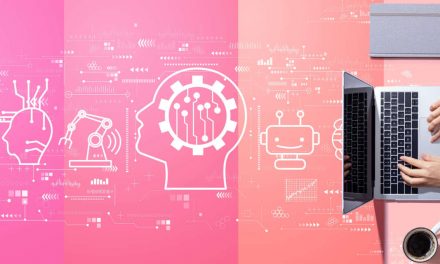By Jack Cumming
Recent media coverage has made senior living appear dated and even dangerous, often due to the human foibles of staff who are doing their very best. That’s unfair. Unfair or not, it’s something the industry should take seriously. Artificial intelligence offers a chance for the industry to leapfrog from defensiveness to a more positive image.
Let’s face it. The term “life plan communities” never caught on with the public, nor should it have. The CLASS (Community Living Assistance Services and Supports) Act proved impractical and undermined the industry’s credibility for sensible policymaking. The ageism campaign floundered when face-to-face with the realities of aging, including the finding that most older people are happier than their younger contemporaries. With AI, senior living can get it right and win acclaim for forward thinking with integrity.
Opportunity
With AI, the opportunity is there for senior living to jump to the forefront of where cool kids want to work and where visionary leaders see their futures. Think of the people-intensive jobs that now dominate senior living.
Staff are needed for cleaning, for performing maintenance, for assisting the frail with bathing and toileting, for ensuring that medication routines are adhered to, for cooking and preparing meals, for serving those meals to residents, and the list goes on and on. The reality is that today these tasks are all done by humans. The ideal transition to the forefront of technology would be a device that can be trained similarly to how humans are trained.
Breakthrough
Now that possibility is nearing reality. Who is leading the way? Who else but Elon Musk? He’s the engineering genius of our time, and he has the drive to get things done. In a video just released, Tesla shows a robot with five finger dexterity that can readily do things for which we now rely on people. Those fingers are sensitive and gentle. It’s easy to imagine what will eventuate with another year or two of development.
The key is that this new robot that can manage an egg is gentle enough that, when trained, it can gently help frail older people to toilet or much more. This is exciting. Moreover, and perhaps more importantly, unlike the impressive Boston Dynamics robot we’ve all seen, this breakthrough Tesla robot can be trained like a human rather than requiring preprogramming. Musk’s team have built in the learning capabilities of artificial intelligence so that the robot can learn and master complex tasks.
Of course, it still needs work and refinement, but this is something that senior living could, and should, get in front of to leapfrog the industry from archaic to futuristically cool. Clearly, Musk will deploy robotics first in his other manufacturing operations. We can only guess when it might come to senior living. That will largely be up to the senior living industry’s leadership. Still, it’s probably five years before robots might be widespread. Five years is but a flash in the passage of time. The time to prepare is now.
Genius at Work
Here’s where Musk’s genius comes to the fore. Don’t be put off by the humanoid appearance. Robots are machines. They’re not human or even human-like. Why then create something that mimics a human? If your goal is to replace humans with robots, freeing humans for higher pursuits, then it’s best to start by mimicking humans. That’s Musk’s genius at work.
We can then look at robotizing the processes in which humans engage and the tasks which humans perform. The human appearance of the Tesla robot is just a starting point. We might begin the transition with the most distasteful of human caregiver chores. Once we have our humanoid robot doing a chore that a human previously did, we can figure out what robotic parts are needed, and which are extraneous.
The next robot might not look any more human than a bank automated teller machine looks like a teller, but the humanoid intermediary can help us to get more quickly to the optimal result. That perception of where to stop and where to go is pure Musk-ian genius. Walter Isaacson quotes Musk as persistently asking, “Why do we need that?” followed by one word, “Delete!”, meaning get rid of anything that isn’t essential. Start with what works and then “delete.” Pure genius.
Transition Challenges
You may now be thinking, “What will happen to all those people senior living now employs?” Obviously, shifting from workers to robots requires new skills to maintain and operate those robots. Those tech maintenance jobs are exciting, unlike the monotony of repetitive, sometime distasteful, chores-based work.
Although Musk can be a difficult person, I can imagine that it’s exciting to work closely with him. It can be self-affirming to be part of a technically advanced working team. People deserve to have life-affirming work. It’s not senior living’s purpose to provide employment to those otherwise unemployable. Perhaps some of those displaced may become a new disability category for those learning-challenged.
If robots become widespread, people will be able to enjoy more leisure time to pursue self-growth, self-actualization, learning, crafts, and many of the activities that residents now pursue in senior living communities. Technology has already transformed how America works and has elevated many jobs into more fulfilling careers. That’s a positive transformation, though the transitions can be challenging.
There is a role for labor unions in helping people through those transitions. In the meantime, there is no merit in impeding technological advance through mandated human staffing ratios. If senior living can deliver a better, higher quality aging experience with the aid of technology, that advance in lifestyle and care ought not to be blocked by staffing ratios embedded in the past.
Leadership Challenges
A shift from today’s senior living to a more technologically friendly future will also challenge C-suite and intermediate leadership. That may be a reason why the industry has not moved more quickly to embrace the emerging potentialities. There is a tendency to wait till vendors offer a product or service. Vendors, though, respond to sales opportunities, and passive leaders, content with convention, are not promising customers. As consolidations occur, national brands emerge, and accountability increases, higher standards for leadership posts will naturally follow.
Artificial intelligence is knocking on the door. It promises a great future for those wise enough and quick enough to see its potential and to overcome its current limitations (a propensity toward error being chief among them). Above all, it can lift a laggard industry to take its place among the most forward industries now shaping the future for the 21st century.
Technological breakthroughs for senior living can make more interesting and more positive news for the media to report than carping on the difficulties of serving a fragile, vulnerable demographic. Click here to give your techies a feeding frenzy.
This is part 2 of Jack’s four-part series about AI. Here’s part 1. You can subscribe here to be notified about the rest.


![Senior Living’s Great Leap Forward [AI Series, Part 2]](https://www.seniorlivingforesight.net/wp-content/uploads/2023/12/209190094_m.jpg)
![Artificial Intelligence: It’s Not Magic [AI Series, Part 1]](https://www.seniorlivingforesight.net/wp-content/uploads/2023/11/114064724_m_normal_none-440x264.jpg)




